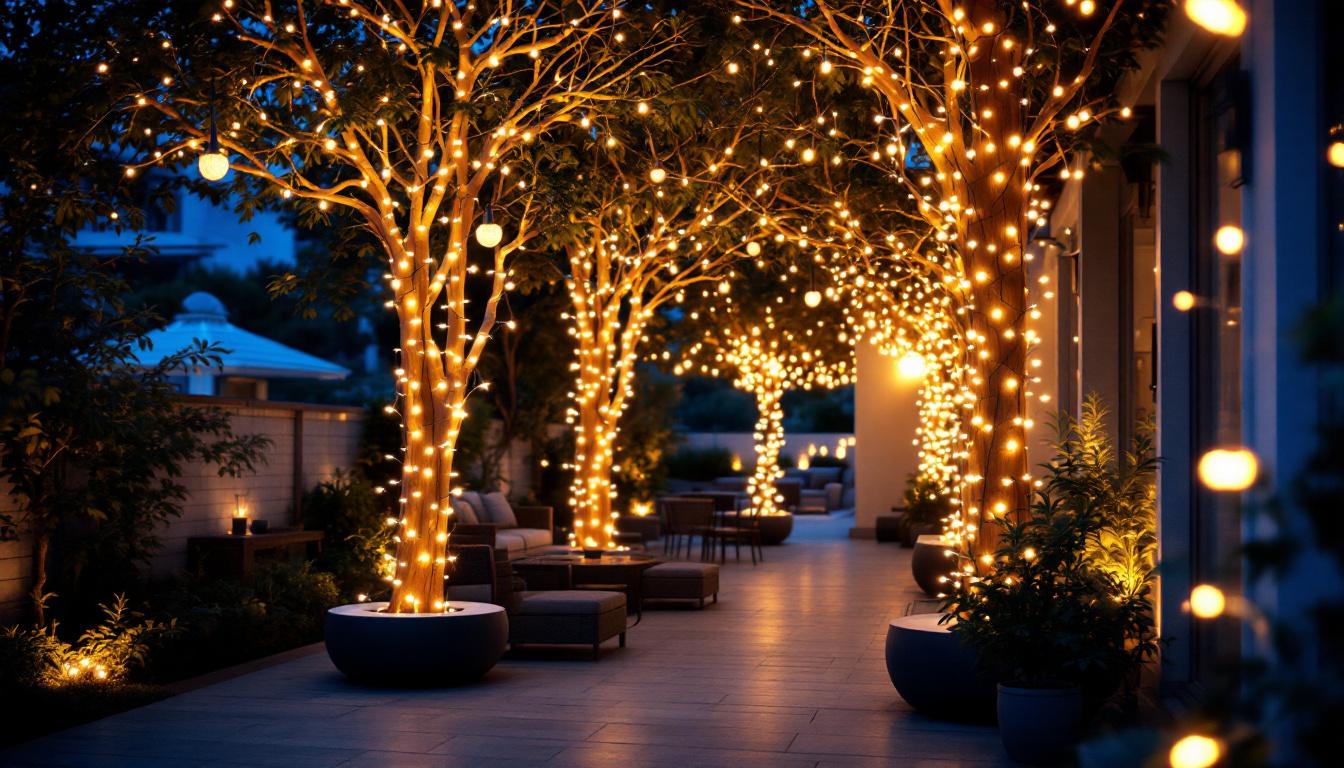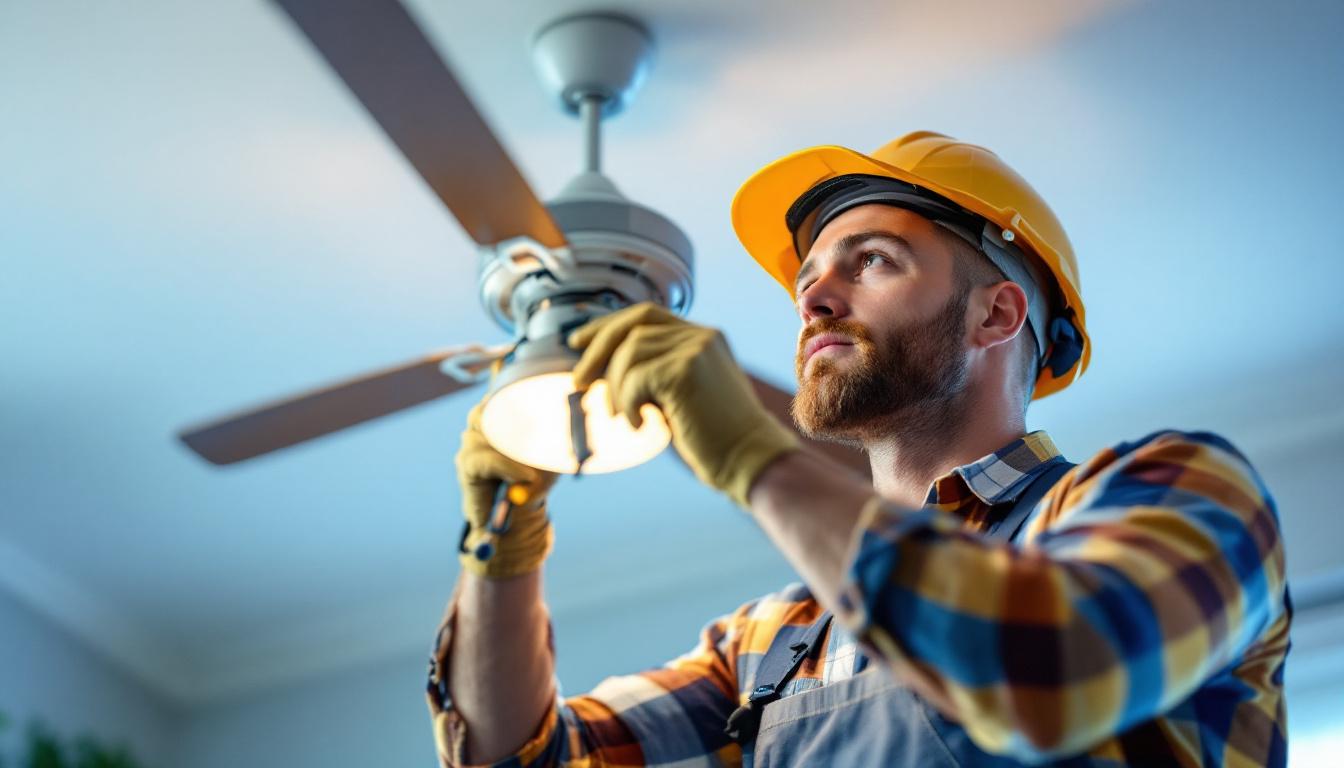
In the world of outdoor lighting, white string lights have become an essential element for enhancing ambiance and functionality. Whether for residential backyards, commercial patios, or festive events, these lights provide a warm and inviting glow that can transform any space. For lighting contractors, understanding the best practices for installing and maintaining outdoor white string lights is crucial for delivering quality results and ensuring client satisfaction.
Before diving into installation techniques and maintenance tips, it is important to grasp the fundamental aspects of outdoor string lights. These lights typically consist of a series of bulbs connected by a flexible wire, allowing for versatile arrangements and designs. Their popularity stems from their ability to create a cozy atmosphere while being relatively easy to install. Whether for a casual backyard gathering or a more formal outdoor event, string lights can transform any space into a welcoming environment.
In addition to their aesthetic appeal, outdoor string lights can also serve practical purposes. They provide illumination for pathways, patios, and decks, enhancing safety during evening gatherings. Moreover, with the right placement, they can highlight architectural features or landscaping elements, adding depth and dimension to outdoor areas. This versatility makes them a favorite choice for homeowners and event planners alike, as they can be tailored to fit various themes and occasions.
Outdoor string lights come in various types, each suited for different applications. The most common types include:
In addition to these common types, there are also specialty lights designed for specific environments or themes. For instance, waterproof string lights are perfect for areas exposed to the elements, ensuring durability and longevity. Furthermore, smart string lights, which can be controlled via smartphone apps, offer advanced features such as dimming capabilities and color changes, allowing users to create dynamic lighting displays tailored to their mood or event.
When selecting string lights, the size and style of the bulbs play a significant role in the overall aesthetic. Larger bulbs can create a bolder statement, while smaller bulbs may provide a more delicate touch. Additionally, styles such as globe, vintage, or Edison bulbs can enhance the theme of the space being illuminated. Contractors should consider the client’s preferences and the intended atmosphere when making recommendations.
Moreover, the spacing between bulbs is another critical factor to consider. Closer spacing can create a more intimate setting, ideal for romantic dinners or cozy gatherings, while wider spacing may be better suited for larger areas, providing a more open and airy feel. It’s also worth noting that the color of the bulbs can dramatically affect the ambiance; warm white bulbs create a soft, inviting glow, while colored bulbs can add a festive touch for celebrations or holidays. Ultimately, the right combination of size, style, and spacing can elevate any outdoor space, making it a perfect retreat for relaxation or entertainment.
Proper installation is key to ensuring the longevity and effectiveness of outdoor string lights. Following best practices can help contractors avoid common pitfalls and deliver high-quality results.
Before installation begins, a thoughtful layout plan is essential. Contractors should assess the space, taking note of existing structures, trees, and other features that may influence the placement of the lights. It’s advisable to sketch a rough design, indicating where the lights will be hung, the distance between each bulb, and the power source.
Consideration should also be given to the height at which the lights will be installed. String lights should be hung high enough to avoid interference with activities below while still providing adequate illumination. A height of 7 to 10 feet is generally recommended for outdoor settings. Furthermore, it can be beneficial to consider the overall ambiance desired for the space; for example, a more intimate setting may require lower-hanging lights, while a festive atmosphere might benefit from a higher installation that casts a wider glow.
Once the layout is planned, securing the lights properly is crucial for safety and aesthetics. Using appropriate hardware such as hooks, clips, or zip ties can help keep the lights in place. It’s important to choose materials that are weather-resistant to withstand outdoor conditions.
For installations involving trees or other natural features, avoid using nails or staples that could damage the bark or branches. Instead, opt for non-invasive methods that allow for easy removal and adjustment. Additionally, contractors should consider the potential for wind or inclement weather; using tension cables or additional support can help maintain the integrity of the installation, ensuring that the lights remain securely in place even during storms or high winds.
Safety is paramount when working with outdoor electrical installations. Contractors must ensure that all connections are waterproof and that the lights are rated for outdoor use. Using extension cords specifically designed for outdoor applications can help prevent electrical hazards.
Additionally, it’s wise to install a ground fault circuit interrupter (GFCI) outlet for added safety. This device will automatically shut off power in the event of a ground fault, protecting both the installation and the users. Regular maintenance checks are also advisable; inspecting connections and the condition of the lights periodically can help identify potential issues before they become serious problems. Furthermore, educating clients about the importance of seasonal maintenance, such as removing debris and ensuring that the lights are functioning properly, can enhance the longevity of the installation and keep their outdoor space looking vibrant year-round.
Once the outdoor string lights are installed, regular maintenance is essential to keep them functioning optimally and looking their best. A proactive approach can prevent issues and extend the lifespan of the lights.
Contractors should advise clients to conduct regular inspections of their outdoor string lights, especially after severe weather events. Checking for loose connections, broken bulbs, or frayed wires can help identify potential problems before they escalate.
During inspections, it’s also important to clean the lights to remove dust, dirt, and cobwebs. A gentle wipe with a damp cloth can help maintain their appearance and brightness.
When a bulb burns out, it’s crucial to replace it promptly to maintain the overall look of the lighting setup. Contractors should provide clients with information on the type of bulbs used and where to purchase replacements. Keeping a few spare bulbs on hand can also be beneficial for quick fixes.
Depending on the climate, outdoor string lights may require seasonal adjustments. In areas with harsh winters, it may be advisable to remove lights during the off-season to prevent damage from snow and ice. Conversely, in milder climates, lights can remain up year-round with proper care.
Beyond functionality, outdoor string lights are a powerful tool for creating ambiance. Understanding how to maximize their impact can enhance the overall experience for clients and their guests.
To achieve a well-balanced lighting design, layering is key. Combining string lights with other light sources, such as lanterns, spotlights, or pathway lights, can create depth and interest. Contractors should encourage clients to experiment with different lighting arrangements to find the perfect balance.
For added versatility, installing dimmer switches can allow clients to adjust the brightness of their string lights based on the occasion. This feature is particularly useful for events, where a softer glow may be desired during dinner, while brighter lighting may be preferred for socializing.
The color temperature of string lights can significantly influence the mood of a space. Warmer tones (around 2700K) create a cozy and intimate atmosphere, while cooler tones (around 4000K) can feel more energizing and modern. Contractors should discuss color temperature options with clients to align with their vision.
Ensuring safety and compliance with local regulations is a critical aspect of any outdoor lighting project. Contractors must stay informed about relevant codes and standards to avoid potential legal issues.
Local building codes may dictate specific requirements for outdoor lighting installations, including electrical standards and permits. Contractors should familiarize themselves with these regulations before commencing work to ensure compliance and avoid fines.
Educating clients about safety practices related to outdoor lighting is essential. This includes advising them on the importance of using outdoor-rated products, avoiding overloading circuits, and ensuring that all electrical connections are secure and protected from moisture.
Outdoor white string lights are a versatile and popular choice for enhancing outdoor spaces. By adhering to best practices in installation, maintenance, and design, lighting contractors can deliver exceptional results that meet client expectations. From understanding the different types of lights to implementing safety measures and creating ambiance, a comprehensive approach will ensure a successful outdoor lighting project.
As the demand for outdoor lighting continues to grow, staying informed about trends and best practices will position contractors for success in this competitive field. By focusing on quality, safety, and aesthetics, contractors can create stunning outdoor environments that clients will enjoy for years to come.
Ready to elevate your outdoor lighting projects with the finest white string lights on the market? Look no further than LumenWholesale, where we provide lighting contractors with exceptional, spec-grade lighting solutions at wholesale prices. Our commitment to quality and affordability ensures that you can bring your clients’ visions to life while staying within budget. With free shipping on bulk orders, LumenWholesale is your go-to source for premium lighting without the premium price tag. Discover the difference and shop our collection now for the best value in wholesale lighting.

Discover the essential checklist for lighting contractors working with cloud lighting fixtures.

Discover essential insights for lighting contractors in our comprehensive guide on loading dock lights.

Discover essential insights into ceiling fan parts replacement and compliance standards.

Discover how commercial lighting sales can transform your projects and fill the gaps in your lighting strategy.